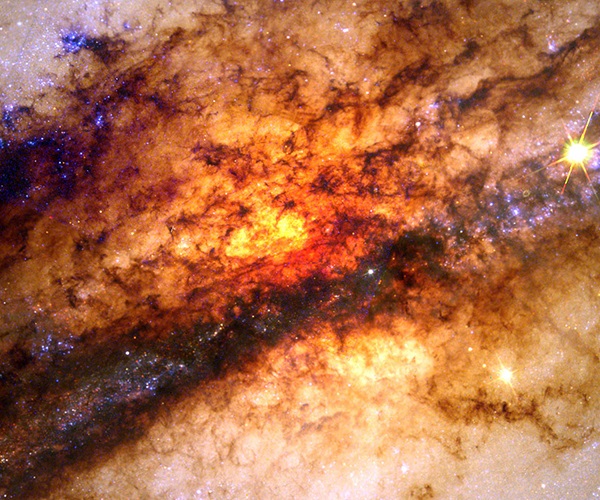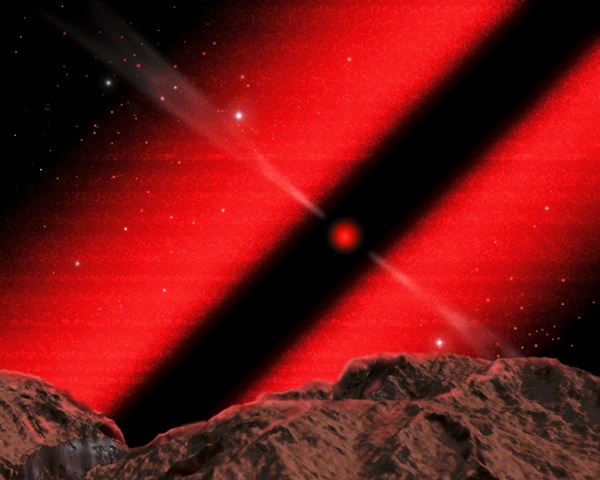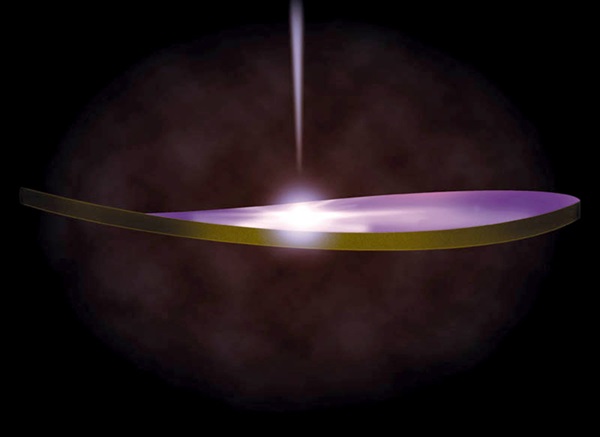Key Takeaways:
Four decades after theories predicted the existence of black holes, astrophysicists held a simple view of them. They were concentrations of mass so great that no light could escape their staggering gravitational pulls. Astronomers believed black holes are black because they are bounded by a limit called the event horizon, which traps radiation in wells out of which no electromagnetic radiation can escape.
The concept of such “dark stars” was put forward as early as 1783 by British geologist John Michell. In the 1920s and 1930s, astrophysicists tightened theories about black holes, but it wasn’t until the last 30 years that astronomers began to collect good observational evidence of black holes’ existence. The label held fast: Black holes were black because nothing could escape their gravitational grasps. Black holes had to be observed through their interactions with other, nearby bodies subject to their influence.

Bringing the universe to your door. We’re excited to announce Astronomy magazine’s new Space and Beyond subscription box – a quarterly adventure, curated with an astronomy-themed collection in every box. Learn More >>.
But this straightforward view of black holes began to change in 1974. In that year, British cosmologist Stephen Hawking worked out a complex set of equations about black holes using quantum field theory. To the astonishment of physicists, Hawking showed that black holes can actually emit radiation. The notion that nothing at all can escape a black hole now seemed wrong. The resulting emission, small as it may be, was dubbed Hawking radiation.
Hawking showed there are several ways to understand how energy can escape a black hole. First, separation of matter-antimatter pairs occurs just beyond the event horizon. This would produce radiation not from within the black hole itself, but from virtual particles getting boosted to higher energy states by the black hole’s gravitation. Another way to look at the process is that vacuum fluctuations could cause a particle-antiparticle pair to appear close to the event horizon. One particle could fall into the black hole, while the other would not. To fill the “hole” in energy left by the lone particle, energy could tunnel its way out of the black hole and across the event horizon, producing the observed radiation. This would cause the black hole to lose mass, and an observer would see radiation being emitted from the black hole.
If black holes can lose mass, then it logically follows that at least some of them could eventually disappear. This process is called black-hole evaporation. When particles escape from a black hole, the black hole loses not only energy, but also mass, because the two are interchangeable equals, as governed by Einstein’s famous E=mc2 equation. For the simplest kind of a black hole, a non-charged, nonrotating Schwarzschild black hole, physicists can estimate the amount of Hawking radiation that should be produced. A one-solar-mass black hole would produce a tiny output of energy — only about 10–28 watts. That’s pretty close to being absolutely black!
Assuming a black hole is dormant — not accumulating any more matter — it’s possible to calculate how long it would take one to evaporate. For a one-solar-mass black hole, the answer is staggering: 1,067 years, or more than a million times longer than the whole history of the universe to date. But tiny black holes would evaporate more quickly, provided they were not gorging on radiation and stars. A black hole with the mass of 1,022 pounds (1,011 kilograms) would disappear in only 3 billion years.
The classical concept of black holes being black is nearly right, but not exactly. Stephen Hawking showed the world that black holes can show themselves, although the evidence may be subtle, and that — given enough time — they can even vanish.













